General Assumptions
Starts with basic model questions on start date of the model, tax rate assumption, working capital assumptions and funding assumptions.
Revenue, Direct Cost and Inventory Assumptions
Revenue assumptions are the anticipated factors that drive a company’s income generation over a specific period. These assumptions form the basis for financial projections and are crucial for planning and decision-making. In our model we have included detailed inputs by Revenue category. We have included monthly input fields for 20 Vending Machines which includes the capacity of each Vending machine (in # of Units sold), the Blended Average Selling Price of all Units, the Total Revenue of each Vending Machine).
We have also included Direct Costs of each Vending Machine including the Average Cost Per Unit of all goods in a particular Vending Machine, along with the Gross Margin % derived from each Vending machine. This allows the Business Owner to track the performance of each Vending Machine from a Revenue, Gross Margin and Capacity Utilization % perspective for better decision making.
Inventory analysis has also been provided for each individual Vending machine showing the starting balance, units sold each month and also a restocking inventory trigger that activates when stock falls to below 200 units in a particular vending machine. The model is currently set for a 200 unit re-stock trigger, however this can be changed by the user to another amount if they choose.
A summary section at the bottom of the Sheet has also been provided showing Revenue by Vending Machine and Gross Margin % by Vending Machine.
Operating Expenses Assumptions
Operating expense assumptions are typically based on historical data, industry benchmarks, market trends, and management’s judgment. They are crucial for estimating the total cost of running the business and for determining profitability. Like revenue assumptions, it’s important to regularly review and adjust operating expense assumptions to reflect changes in the business environment and ensure the accuracy of financial forecasts. In our model we have included detailed inputs on Staff costs (Owner, Other), and Typical Operational Expenditure items likely for Vending Machines including Location Fees/Commissions, Maintenance & Repairs of Vending Machine Equipment, Restocking Costs, Utilities, Administrative and Overhead Costs, Marketing and Promotion Costs, Insurance, however, you can add any other expenses you think may be relevant to your business in this sheet.
Funding, Capex and Other Assumptions
Capital expenditure (Capex) assumptions refer to the anticipated investments a company plans to make in long-term assets, such as property, plant, equipment, and technology, over a specific period. These assumptions are crucial for financial planning, budgeting, and forecasting, as they impact the company’s cash flow, profitability, and growth prospects. We have included an ‘Initial Costs’ schedule which shows the main costs in starting a Vending Machine business (Vending Machines, Installation Costs, Initial Inventory, Maintenance and Service Equipment) and Marketing and Branding Costs.
We have also included a Capital Structure assumption section (showing the % of Initial Costs funded by Equity vs Debt).
A Fixed asset schedule has been included showing the main items likely to be on a company’s capex sheet, the total costs and the assumed useful life of each asset.
Monthly Projections (10 Year period)
We have broken down projections on a Month by Month basis when projecting Income Statement, Balance Sheet and Cash Flow Statement items. The monthly projections are provided over a 10 year time frame. This is particularly useful for businesses looking at month-on-month trends and insights in the business, which leads to better decision making and also better budgeting should there be a need to either raise more capital, pursue growth opportunities from excess capital or pay down interest bearing debt. Monthly projections also help a business ascertain what performance may be seasonal in nature when looking at growth projections on a month-over-previous-year’s-month basis.
Annual Projections (10 Year period)
The model has Annualized Financial Projections of Income Statement, Balance Sheet and Cash Flow Statement over a 10 year time frame. Annual projections provide an excellent overview of expected revenues, expenses, profits, cash flow, and other key financial metrics for the upcoming year. Annual projections are essential for strategic planning, budgeting, fundraising, and performance evaluation for any company at any stage of their business cycle.
Vending Machine Financial Metrics & Other Metrics
Vending Machine Financial metrics and Ratios have been included which highlights Revenue and Profitability by Vending Machine, Direct Costs and Operational Costs as a % of Revenue, Profitability Ratios over a 10 year time frame.
Summary of Financial Statements
Summarized Financial Statements over a 10 year time frame helps for better snapshots of financial performance. Income Statement, Balance Sheet and Cash Flow Statement all provided.
Charts
Charts available including Profitability Margins (Gross Profit Margin, EBITDA Margin and Net Profit Margin), Revenue vs Direct Costs Projections, Revenue By Category and Cashflow Summary
DCF Valuation
We have included a Discounted Cash Flow (DCF) Valuation model showing the Net Present Value (NPV) of the Business based on a series of growth rates and assumptions. Weighted Average Cost of Capital Assumptions also provided including Risk Free rate, Beta, Risk Premium and Equity Risk Premium. A DCF valuation is a method used to estimate the value of an investment, business, or asset by discounting its expected future cash flows to present value. It is based on the principle that the value of an investment is determined by the present value of its future cash flows. The DCF valuation technique is widely used in finance, investment analysis, and corporate finance for making investment decisions, determining the fair value of securities, and evaluating the worth of businesses.
Depreciation Schedule
Detailed Depreciation Schedule shows additions / disposals to the Fixed Asset Register of the business. Sections included for Vending Machines, Others.
Debt Schedule
Debt schedule provided with interest rate assumptions and payback period assumptions included.
Equity Schedule
Equity schedule provided with assumptions on all investments into the business by investors or owners.

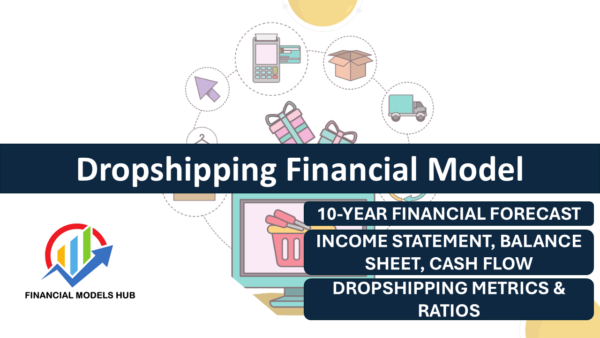

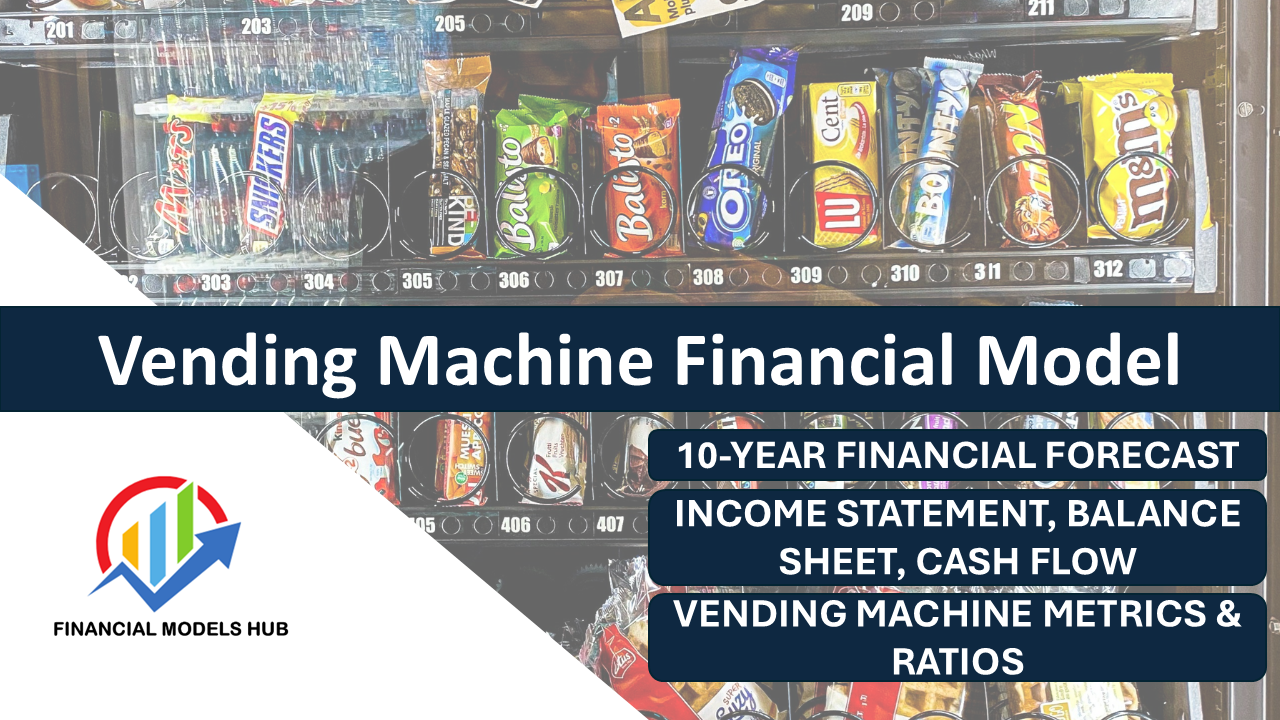
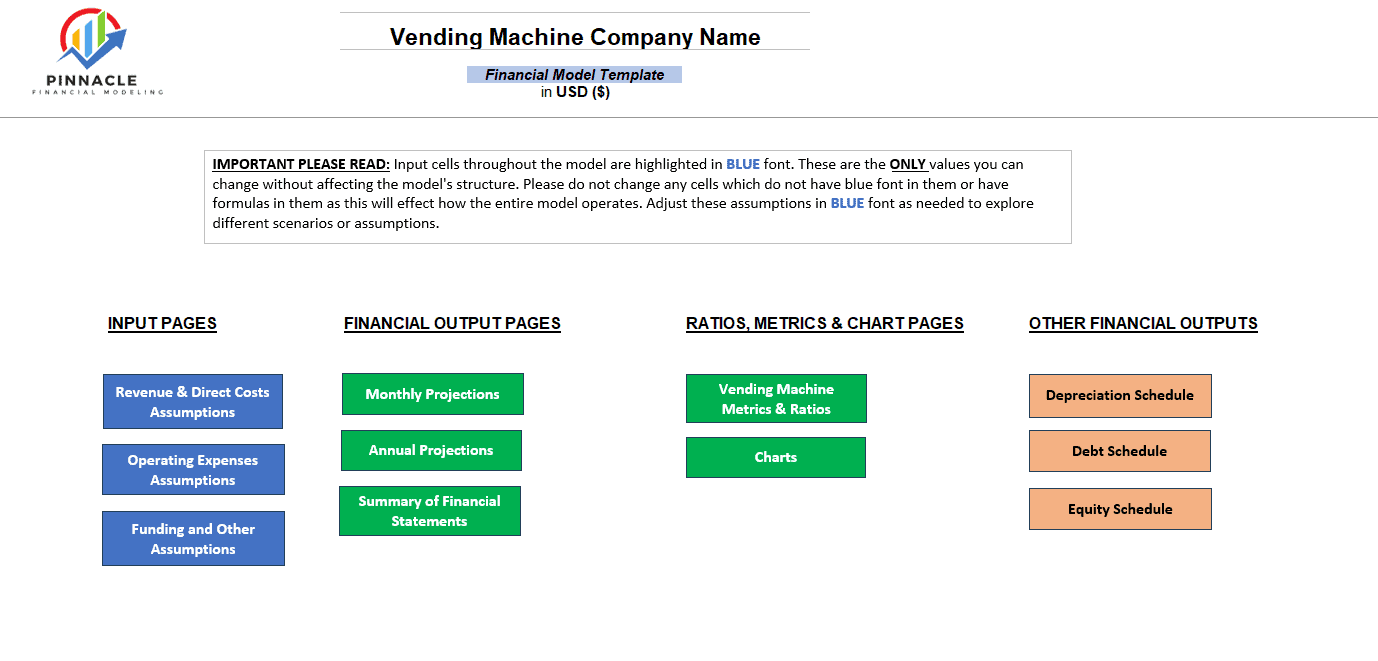
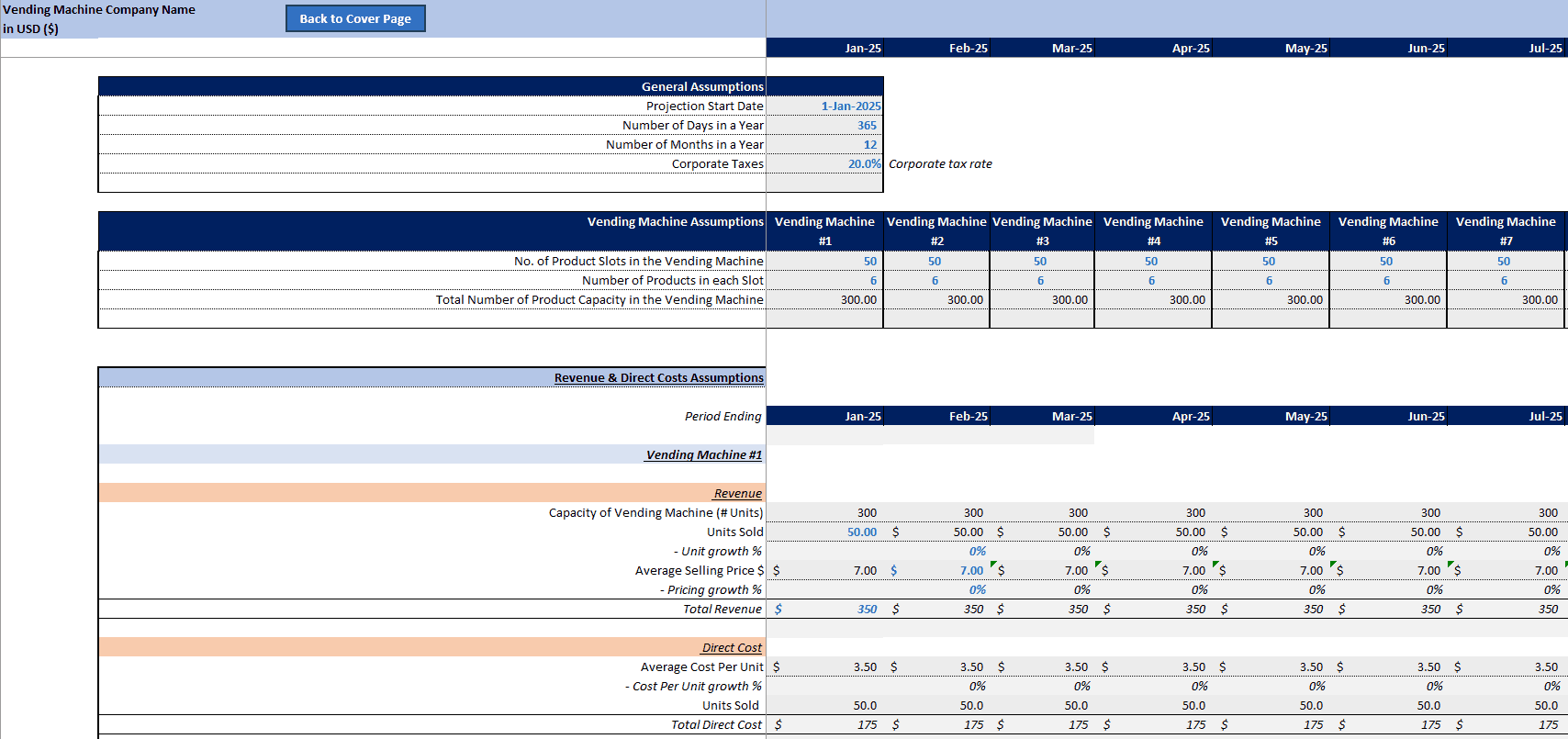
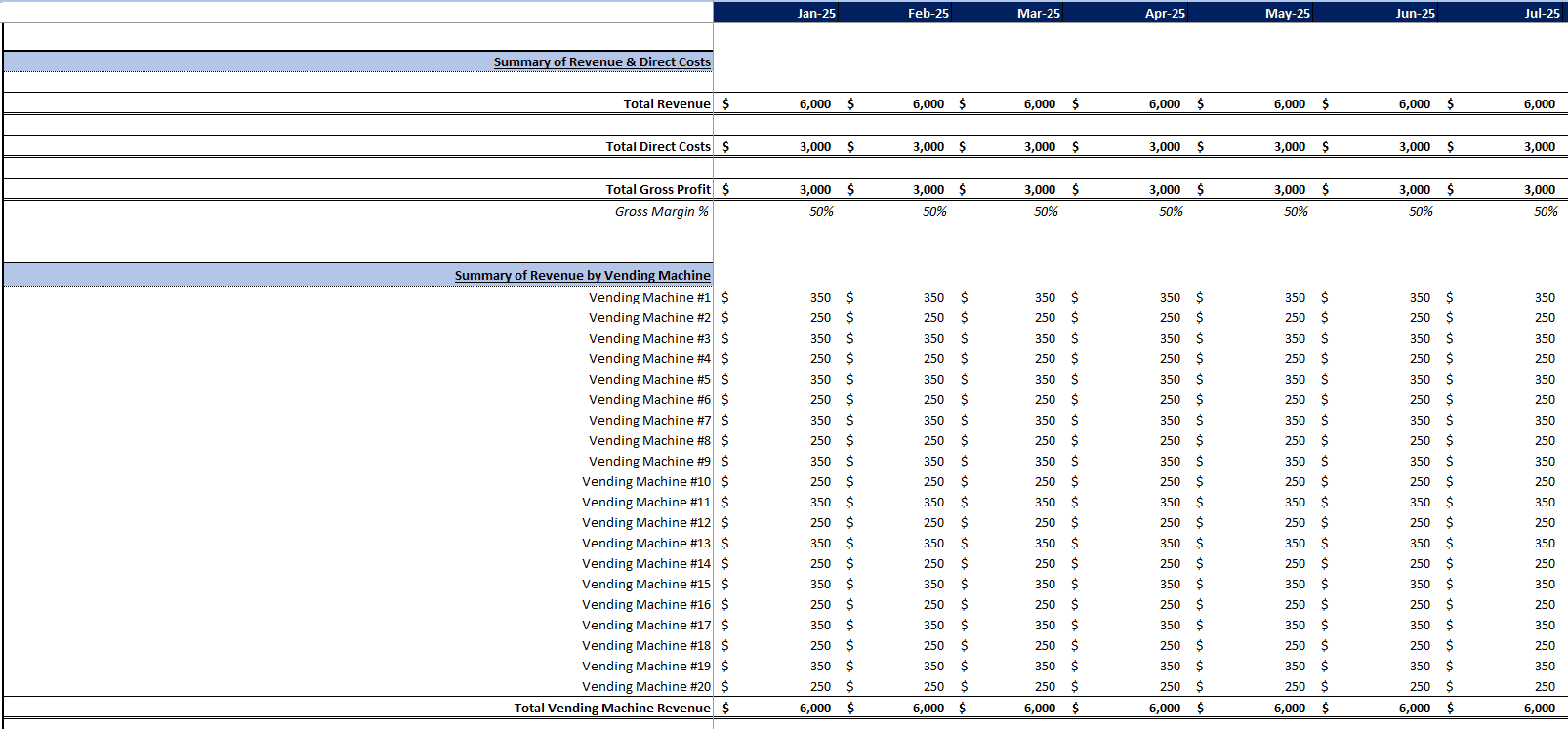
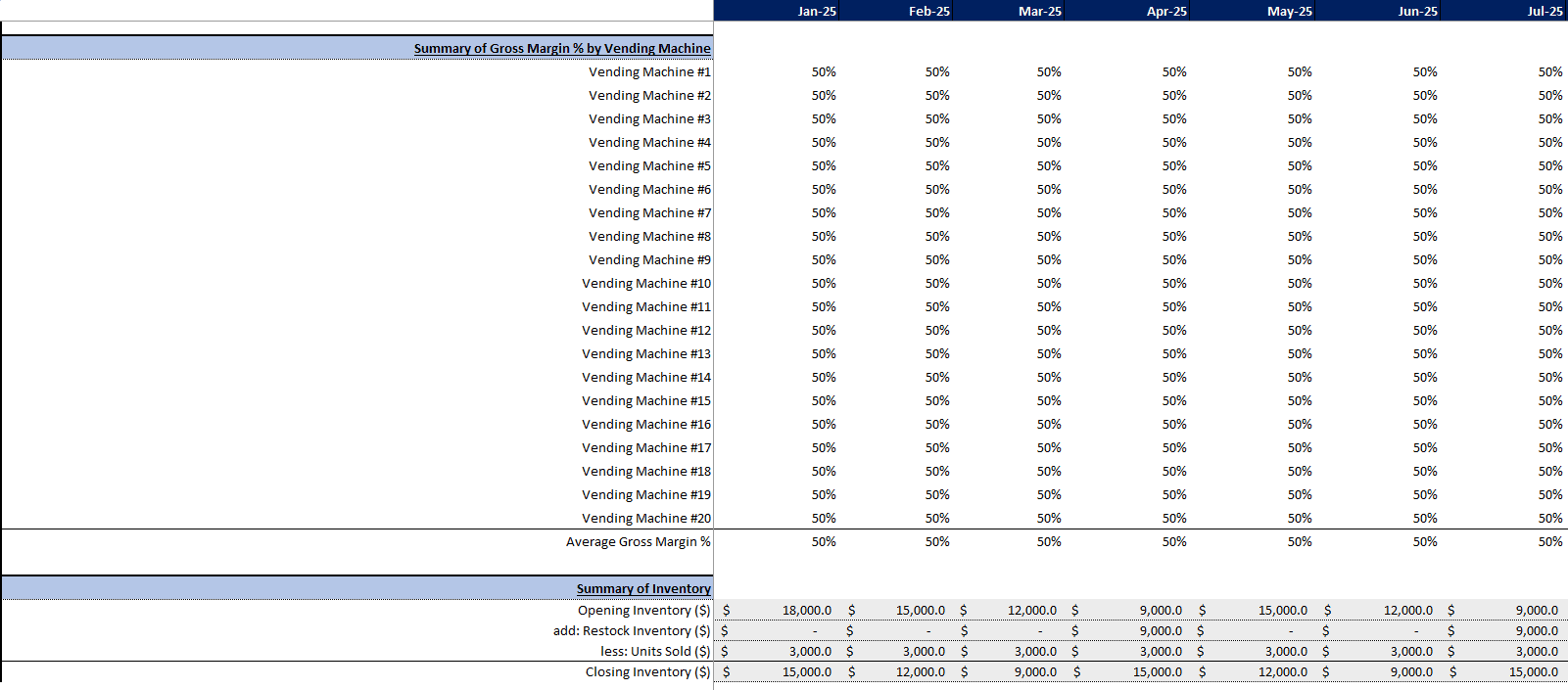
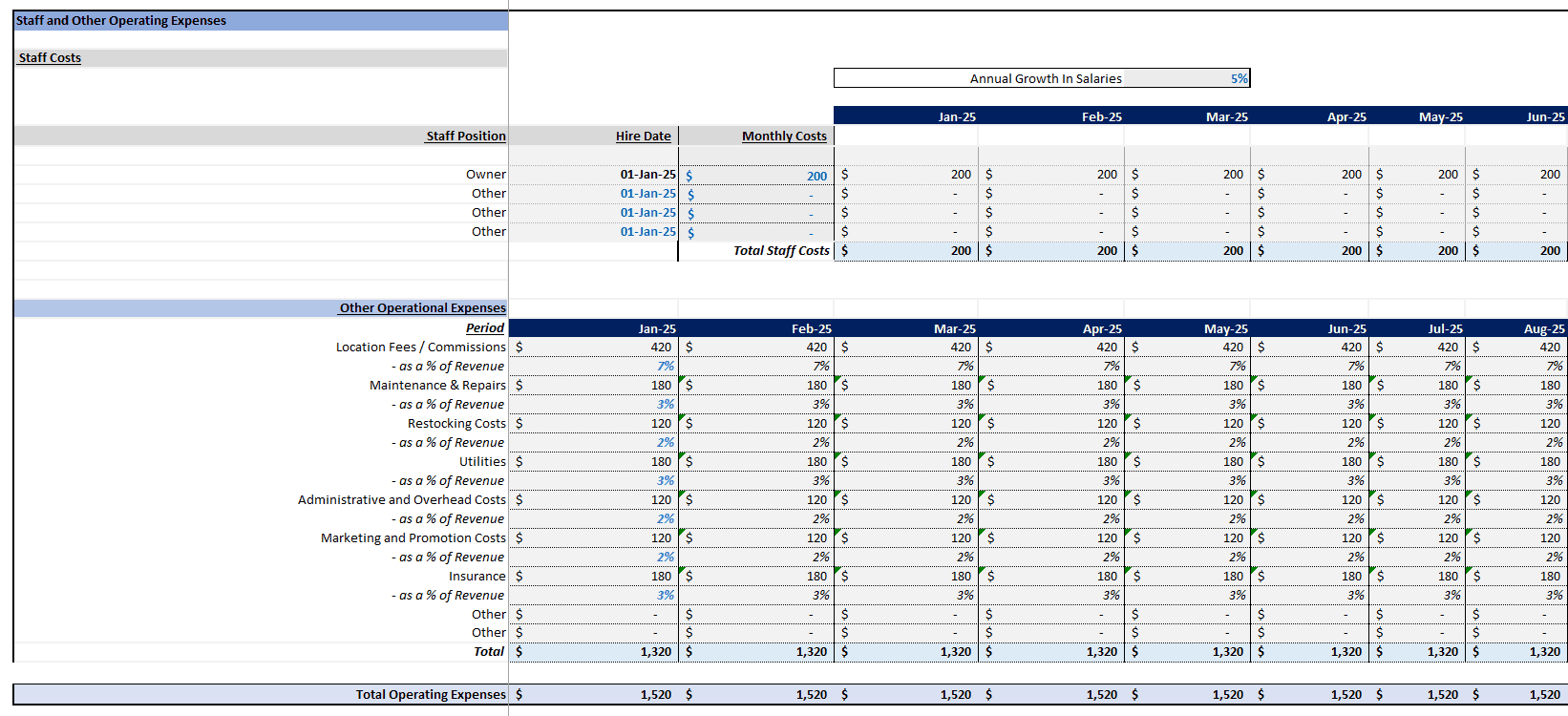
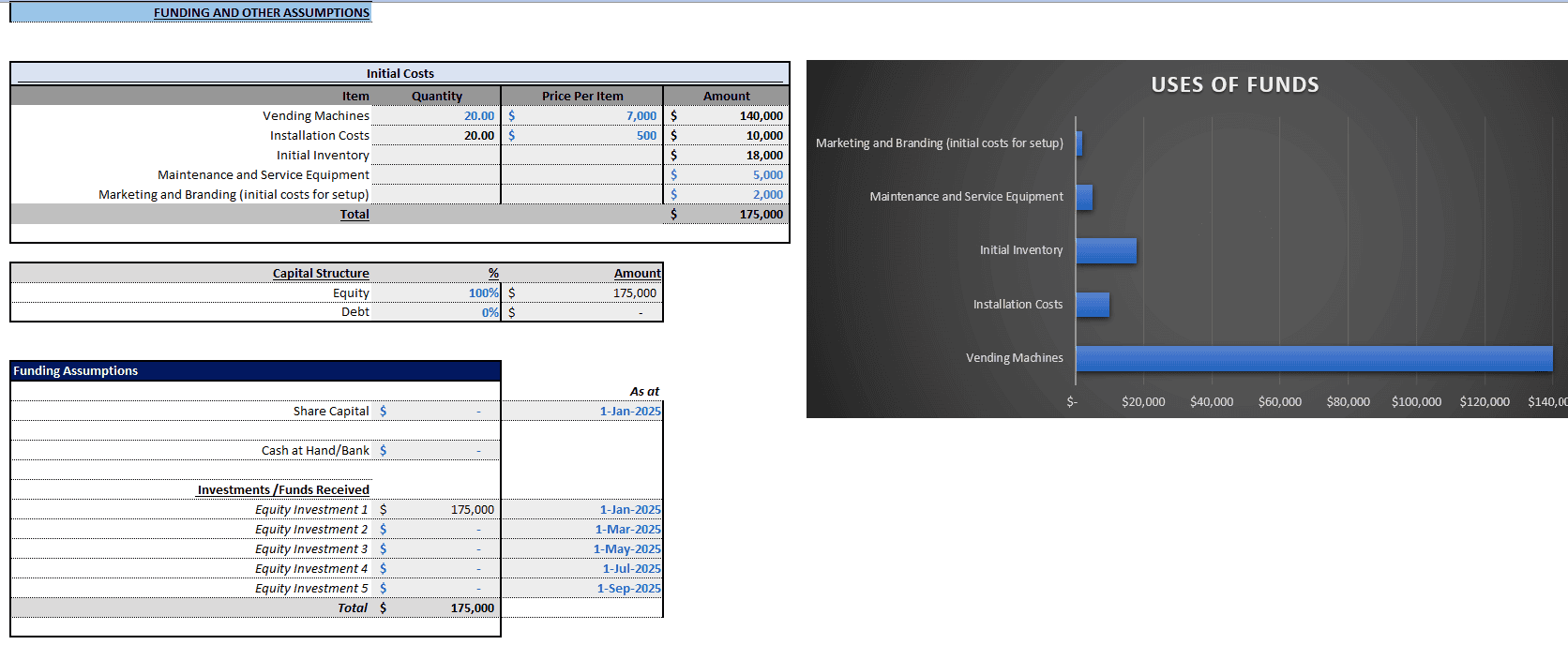
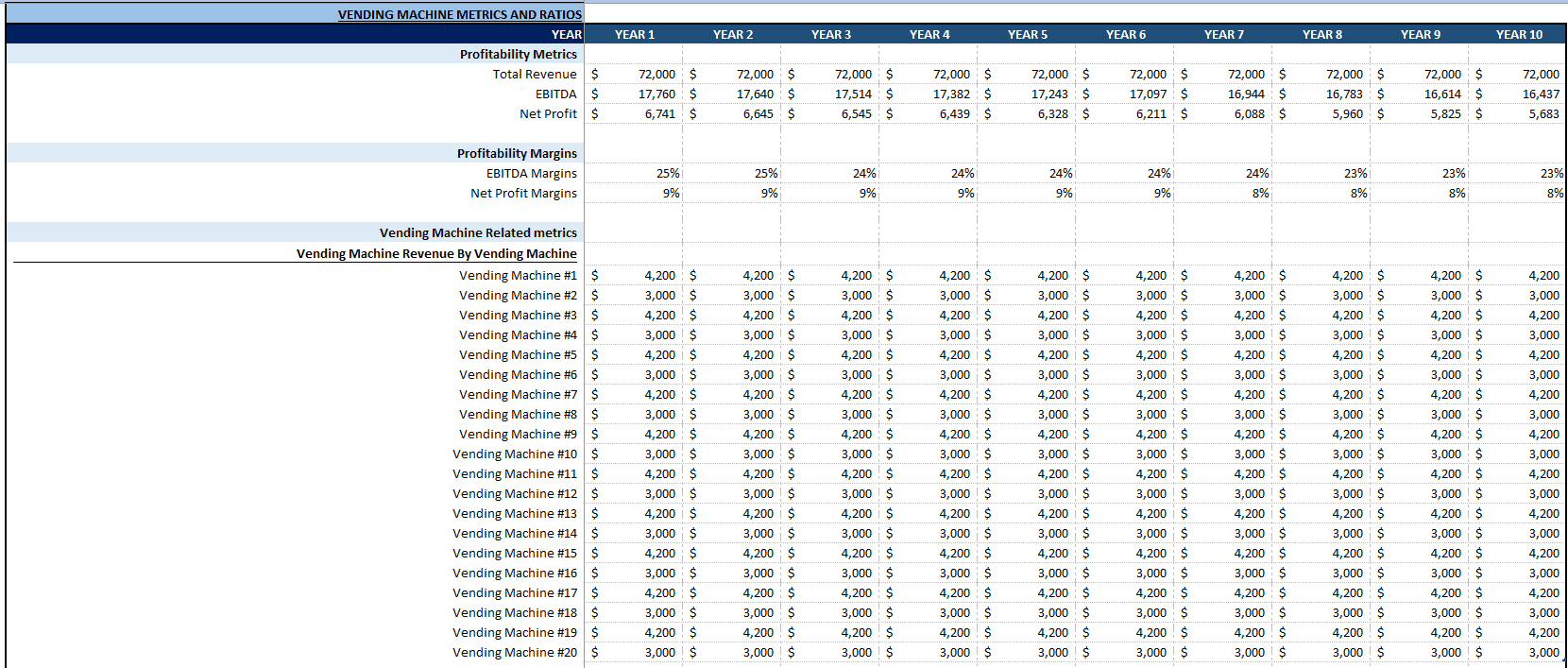
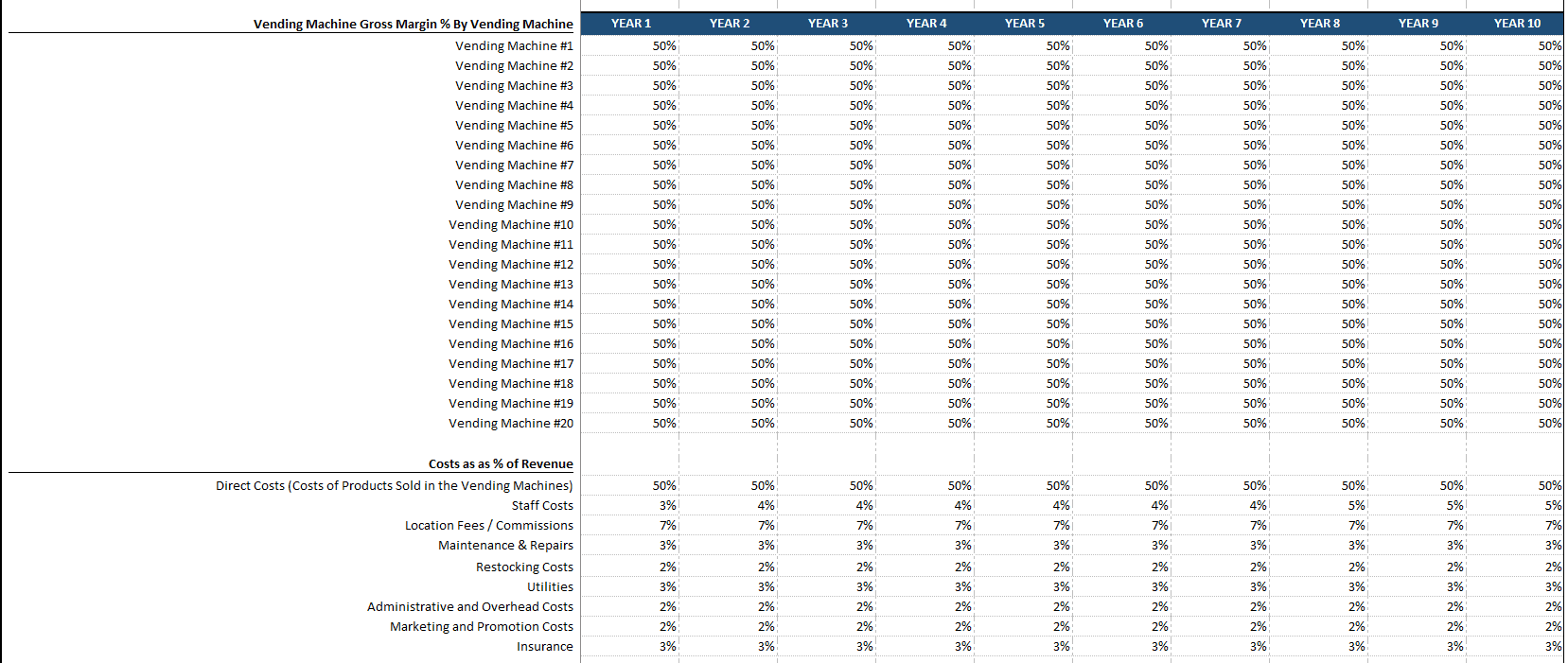
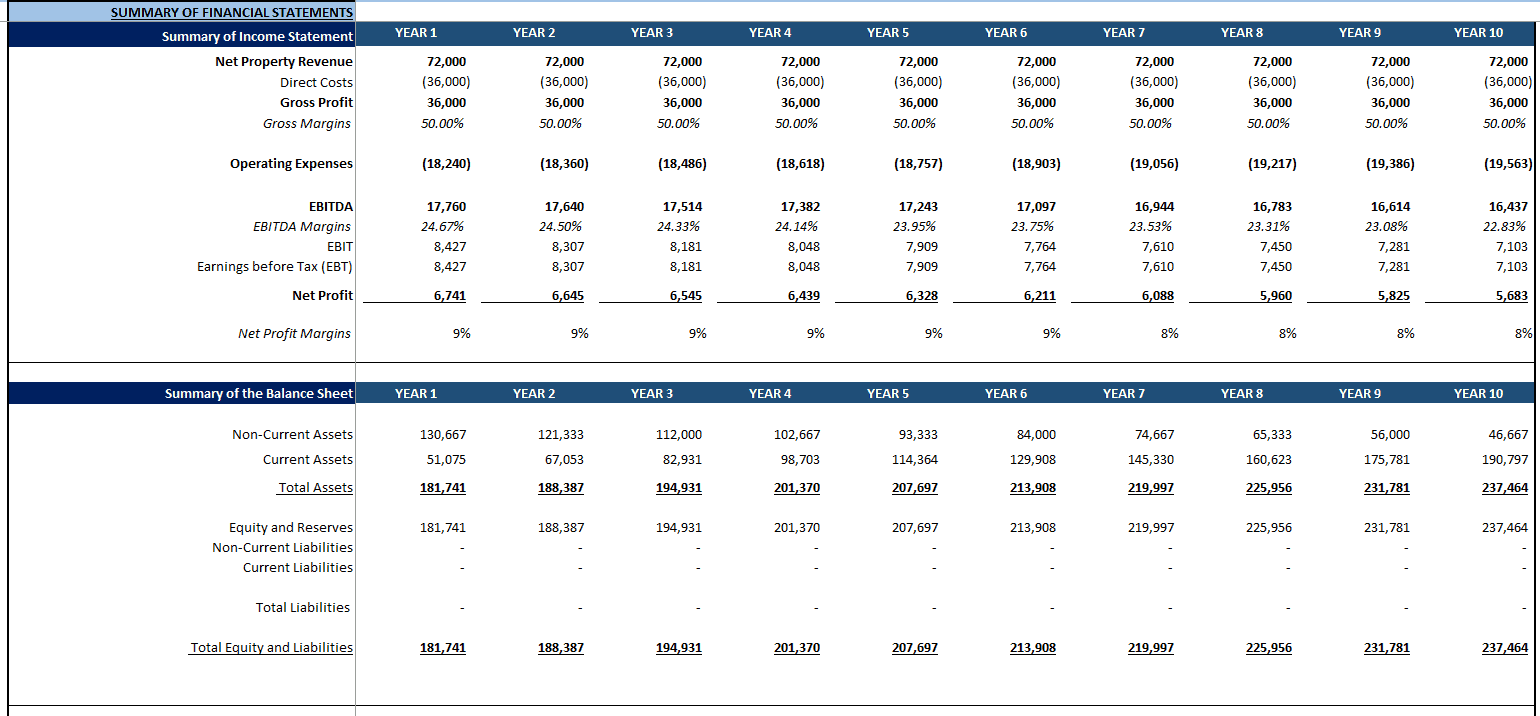


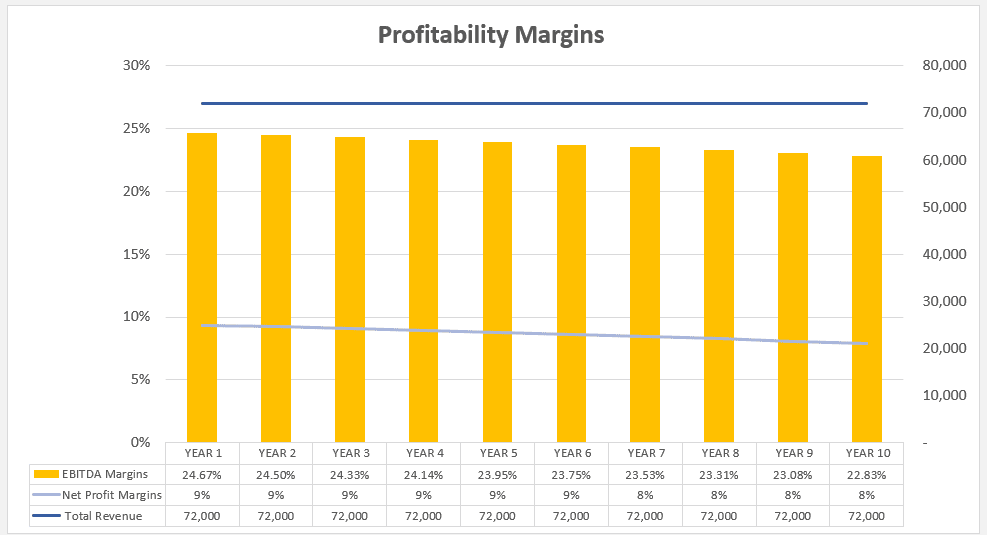
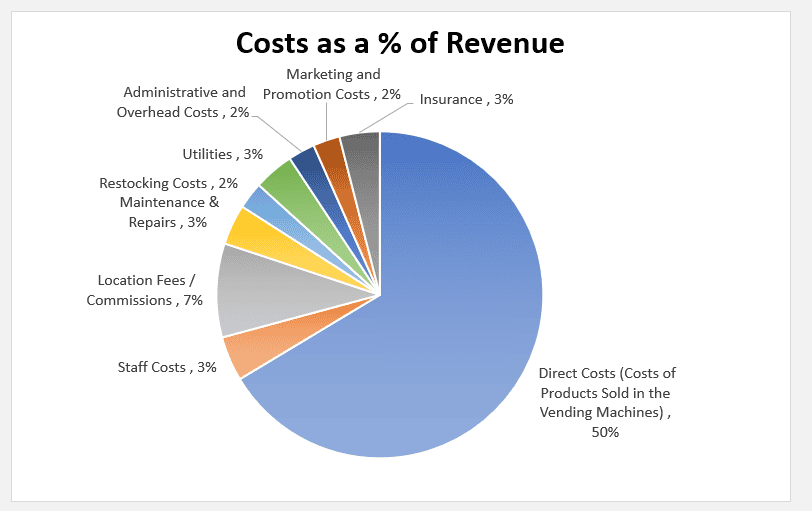




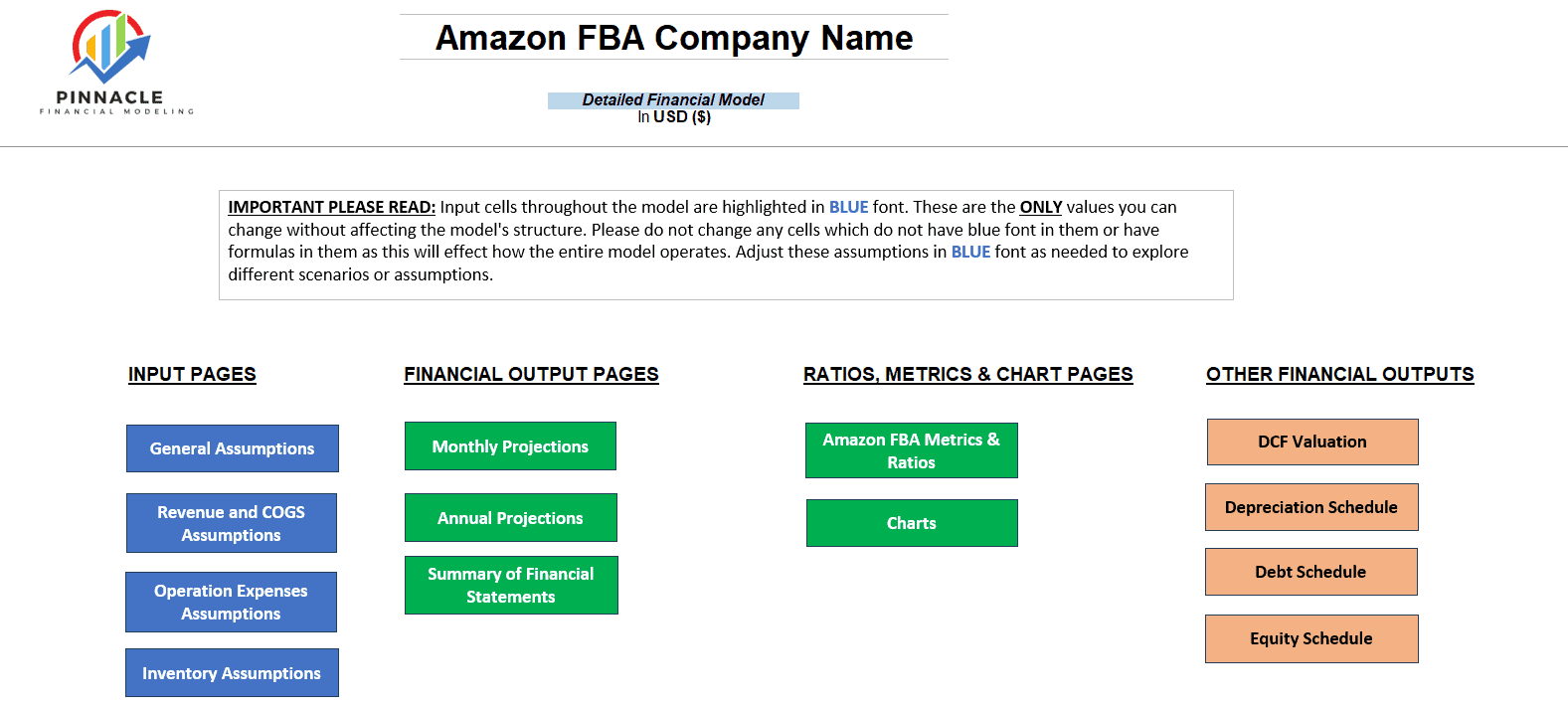

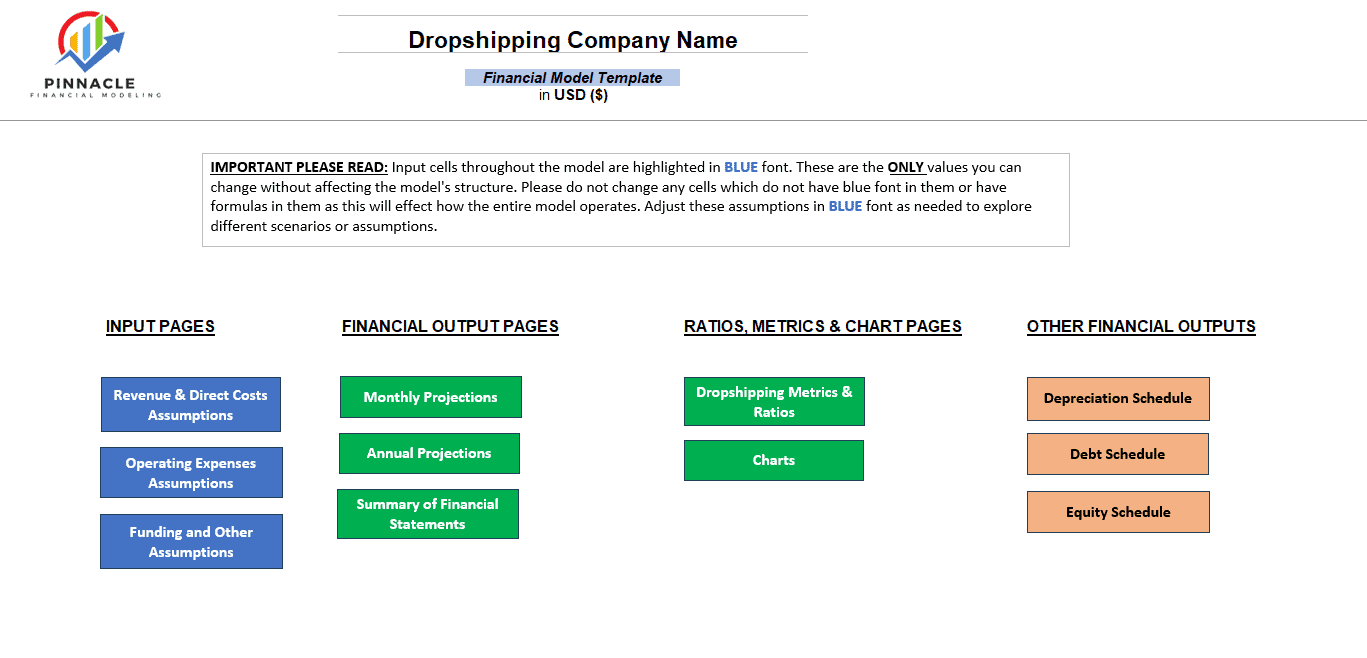




Michelle Tomlinson –
I was impressed with the level of detail included. Truly comprehensive!